June Walking Tour – Blooming Cacti and Succulents
As spring transitions to summer, there is something in bloom just about everywhere at the Gardens. Amid this floral abundance, it can be easy to miss the brief flowering displays of cacti and succulents. Even without flowers, cacti and succulents are the backbone of many gardens at Denver Botanic Gardens, providing bold architectural shapes and year-round structure. And when in bloom, they have flowers striking enough to compete with any showy perennial. What’s more, these plants have specialized metabolisms that make the most of the little rainfall we receive here in Colorado, so they’re a great place to start when planning a water-smart garden. Here are just a few areas where you can see blooming cacti and succulents this month.
Dryland Mesa
Start out at the northwest corner and walk south between Dryland Mesa and the Laura Porter Plains Garden. This garden showcases plants adapted to arid environments from western North America and like the Plains Garden receives no supplemental irrigation. Keep this in mind as you view some of these June showstoppers.
- Claret cup cactus (Echinocereus triglochidiatus) is Colorado’s state cactus! You can find it blooming on the west side of Dryland Mesa, tucked in rock crevices. Its scarlet red flowers are visited by hummingbirds, so be on the lookout for these pollinators while you are strolling through.
- As you walk along the west side of Dryland Mesa, you will pass by several species of cholla cactus (Cylindropuntia spp.). These odd cacti with their sprawling tentacle-like stems do very well in our climate. There are several species on display in this garden: Cylindropuntia whipplei 'Snow Leopard' (silver cholla) may not be blooming but its white spines have a glowing aura, especially if you catch it during the warm, natural light of golden hour. Cylindropuntia imbricata (cane cholla) is Colorado’s most common cholla species and you can see several interesting selections here, including ‘White Pyramid,’ which has cream-colored flowers.
- As you reach the southwest corner of Dryland Mesa, you’ll find towering tree-like yuccas. Yucca spp. are not cacti (and among purists, not even technically succulents), but rather a member of the asparagus plant family (Asparagaceae). Look for emerging flower stalks on the top of the plants and you’ll see the resemblance to its vegetable relative. These plants can store water in their thick, fleshy stems and are found far to the south in the Chihuahuan Desert, but we can grow them here in Denver in warm, dry microclimates. Here you’ll find impressive specimens of Yucca faxoniana (Spanish dagger), Yucca thompsoniana (Thompson’s yucca) and Yucca elata (soaptree yucca). If these aren’t blooming here, you can see them in the Crossroads Garden in front of Boettcher Memorial Center. The creamy bell-shaped flowers are pollinated exclusively by moths which have coevolved with yuccas. This specialized relationship is known as an obligate mutualism, where both plant and pollinator cannot persist without the other. Now, head north on the stone path that bisects Dryland Mesa to see a number of other blooming cacti. From here, walk east past the Hive Garden Bistro toward the greenhouse complex and the Nexus Garden.
Nexus Garden
Baked by the hot afternoon sun, this western-facing slope is a perfect site to display cacti and succulents. Once again, the plants here thrive with very little supplemental irrigation. This space was redesigned in 2018, swapping out water-guzzling annual displays for xeric perennials.
These are a few plants that you shouldn’t miss:
- The prickly pear cacti (Opuntia spp.) in this garden are WALK IN BEAUTY™ hybrids and unlike other Opuntia they are able to re-bloom! Check out the peachy blooms of ‘Mandarin Sunrise’ and soft pink flowers of ‘Apricot Glory.’ Many of these hybrids have purple pads during the winter months, a product of betacyanin pigments that help protect plants from abiotic stressors like cold weather. The result for gardeners is beautiful coloration that makes for excellent winter interest.
- You’ll also see several mounding cacti, like Echinocereus fendleri (Fendler’s hedgehog cactus) and Echinocereus reichenbachii ssp. baileyi (Bailey’s hedgehog cactus) tucked into crevices between the sandstone slabs where they benefit from the stone’s thermal mass and radiant heat. Crawling through interstitial space amid cacti and along the bottom of the berm, the radioactive pink flowers of Delosperma ‘PJS01S’ GRANITA™ Raspberry (Ice Plant) demand your attention. There is a dizzying array of Delosperma cultivars and selections on the market, so you can surely find one to fit your personal taste.
Hopefully you’ve been convinced that cacti and succulents are more than a prickly nuisance and deserve a place in your garden. Make note of how these remarkable plants have been woven into other spaces at the Gardens.
Gallery
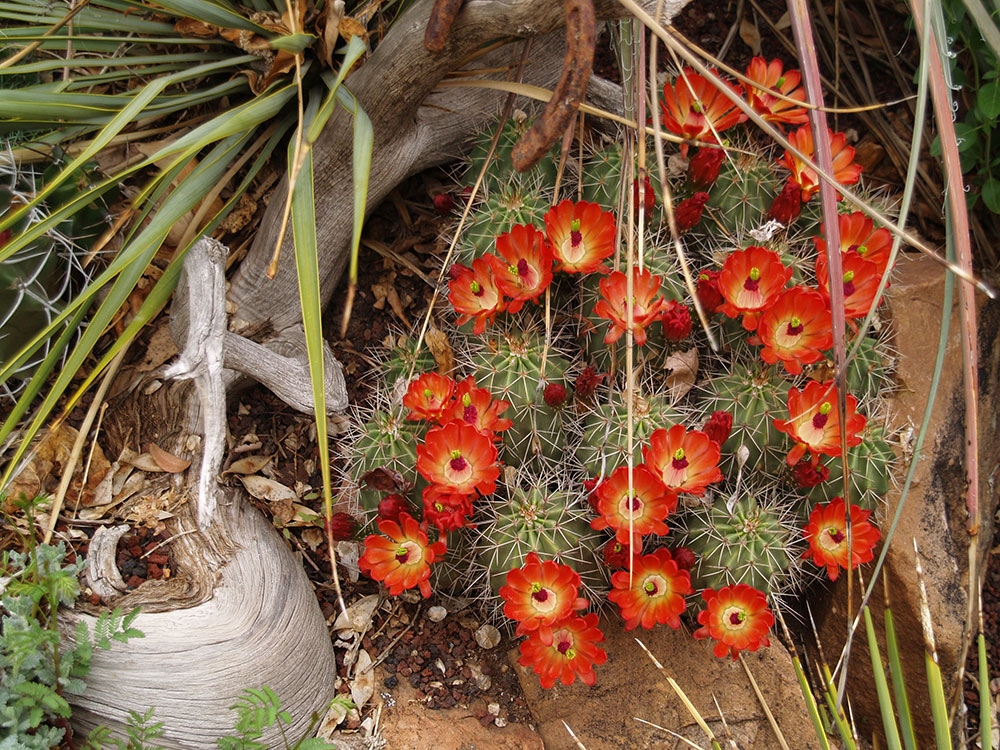
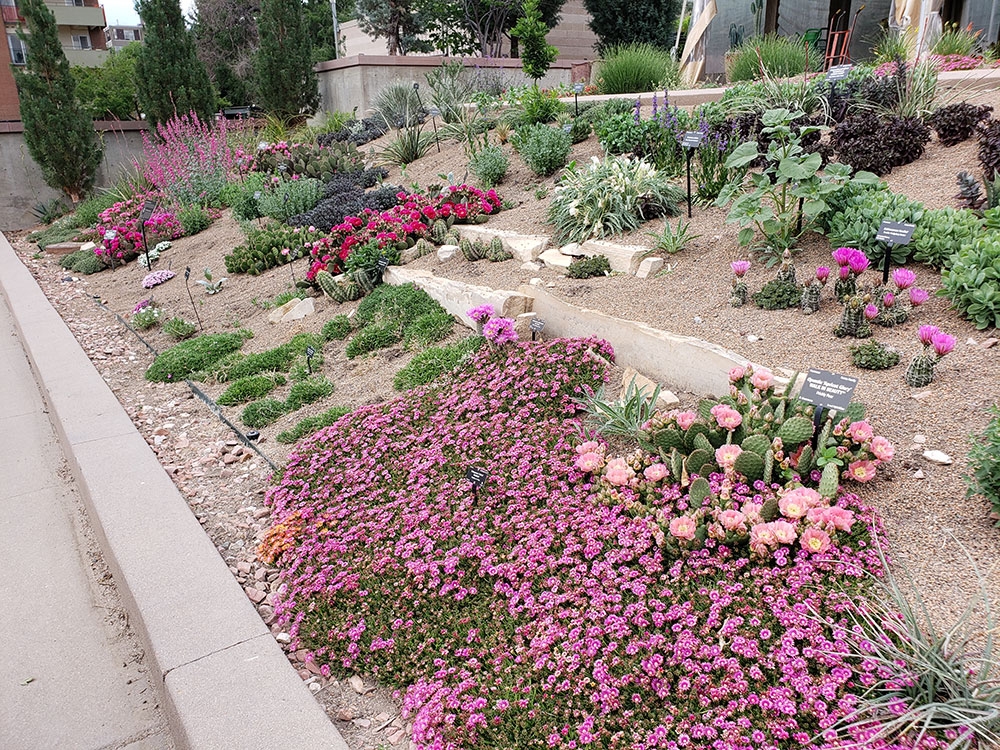
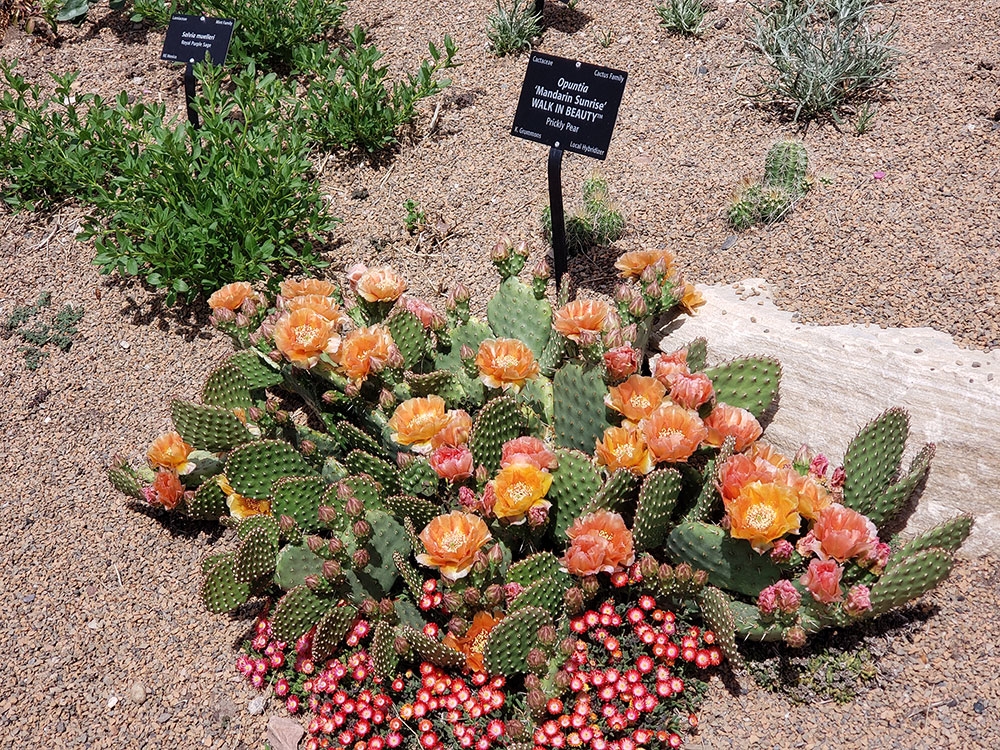
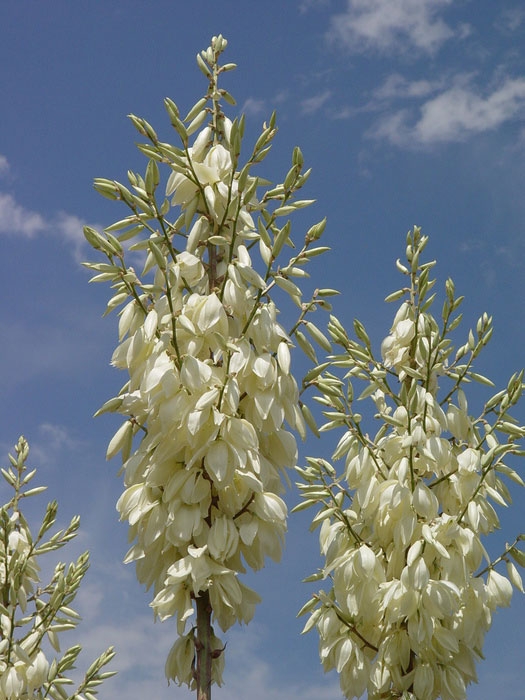
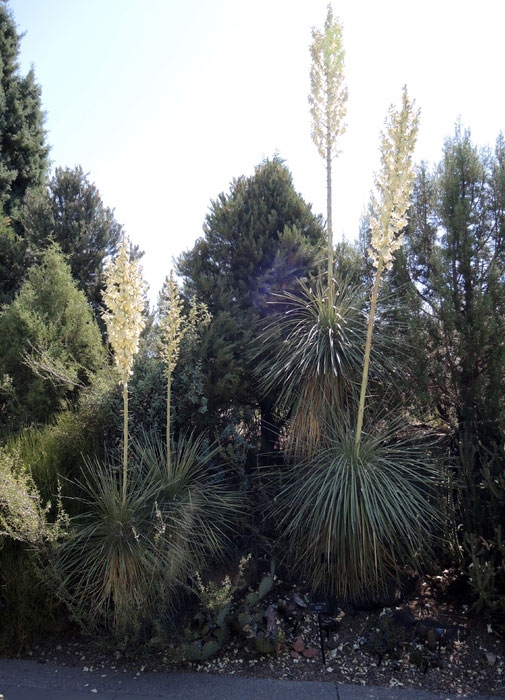
Add new comment